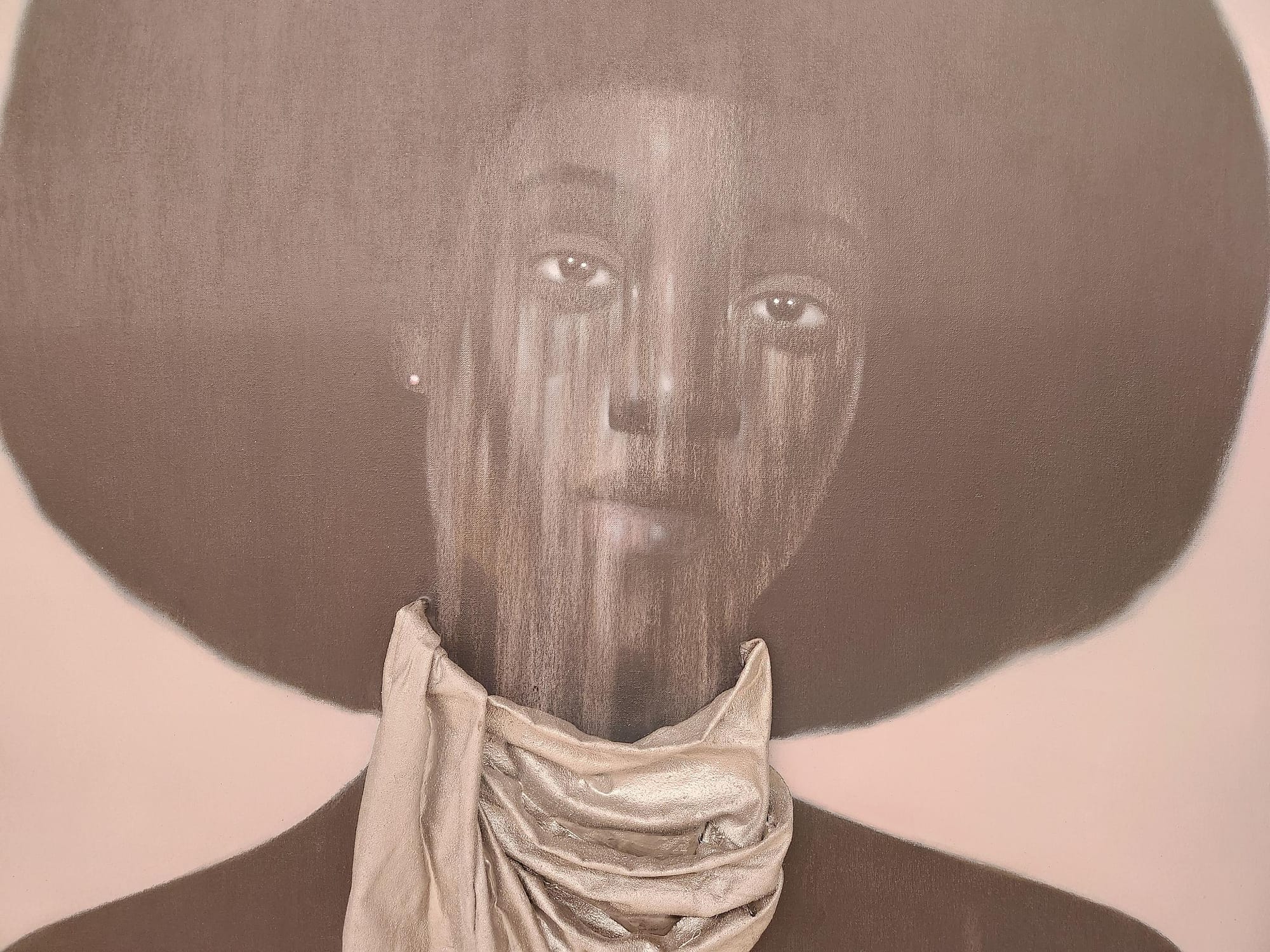Gallery Guichard Presents
Michael McAfee Art Unvieling and Art Show
1438 Webster St.
Oakland
March 30, 2024
In a temporary gallery space, canvases came to life. On gray felt walls hung one-to-five foot pieces bursting outward, upward, toward the viewer. They begged to be touched, to be held, perhaps. Figurative in some spaces and wildly abstract elsewhere, the pieces breathed in the could-be-sterile space.
The occasion was a pop-up show featuring the works of artists from Nigeria, South Africa, and, closer to home, Chicago, Houston, L.A. Their pieces hung (or stood, as some proudly did) on the second floor of a bank building (Beneficial State Bank, located downtown blocks from BART and the lake), full of lush plants and welcoming hosts. A glass of Moët was offered to visitors entering the space, as was a warm greeting from the gallerists .
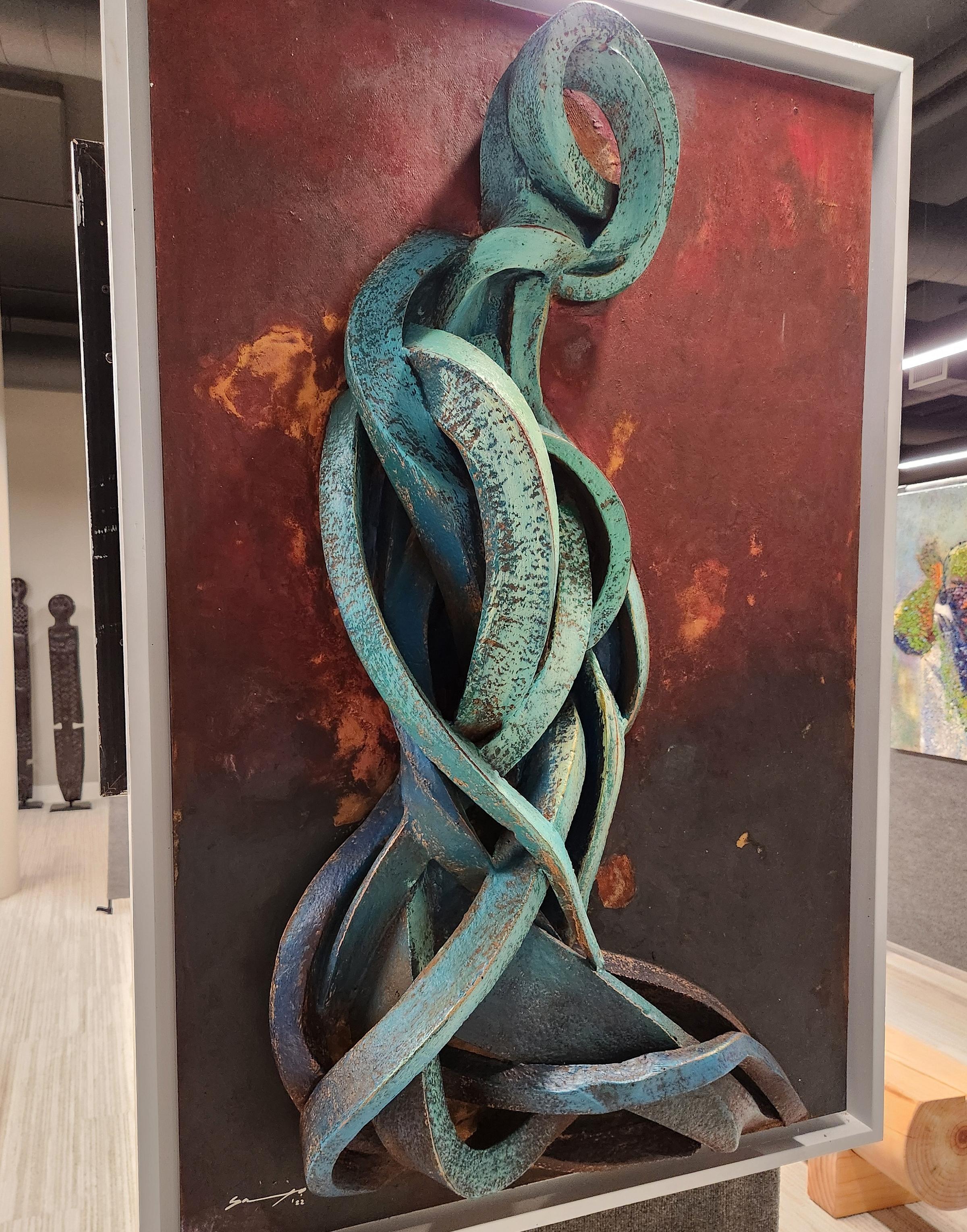
Chicago-based Stephen “Sayo” Olalekan’s works popped out immediately, spanning multiple surfaces and several media.
Some rusty canvases, such as “Expectation” boasted 3‑D figures, twisted and patina’d, open but sturdy, their heads a swoop of smooth lines and limbs intertwined with their inside while also bulging outward. Others, like “Tender Gaze,” were acrylic paintings of lovingly rendered faces gently distorted with smudged linear lines, a film grain, charcoal, or crayon drawing dragged downward, eyes left undisturbed.
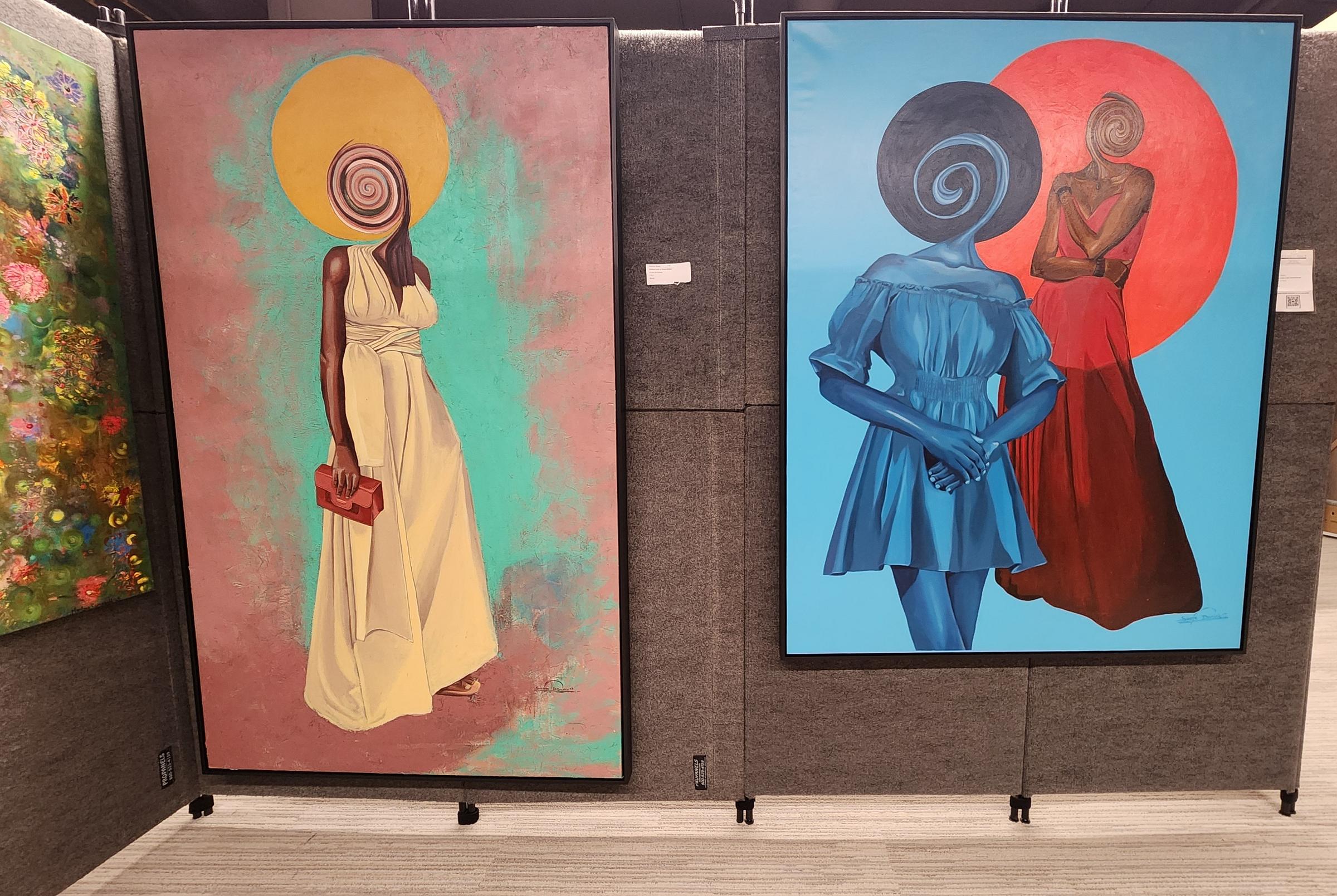
Dominic Souye of Nigeria works in bright, saturated hues on large canvases, fabrics of the figures folded and draped and gathered with monochromatic levity, their faces missing, swallowed, swirled away from the public eye. Their titles are sometimes cheeky. (See “See My Smile,” and “The Present is Yet in the Past.”) The subjects clearly know more than they allow us to, which seems fair. Bodies do know more than we credit them.
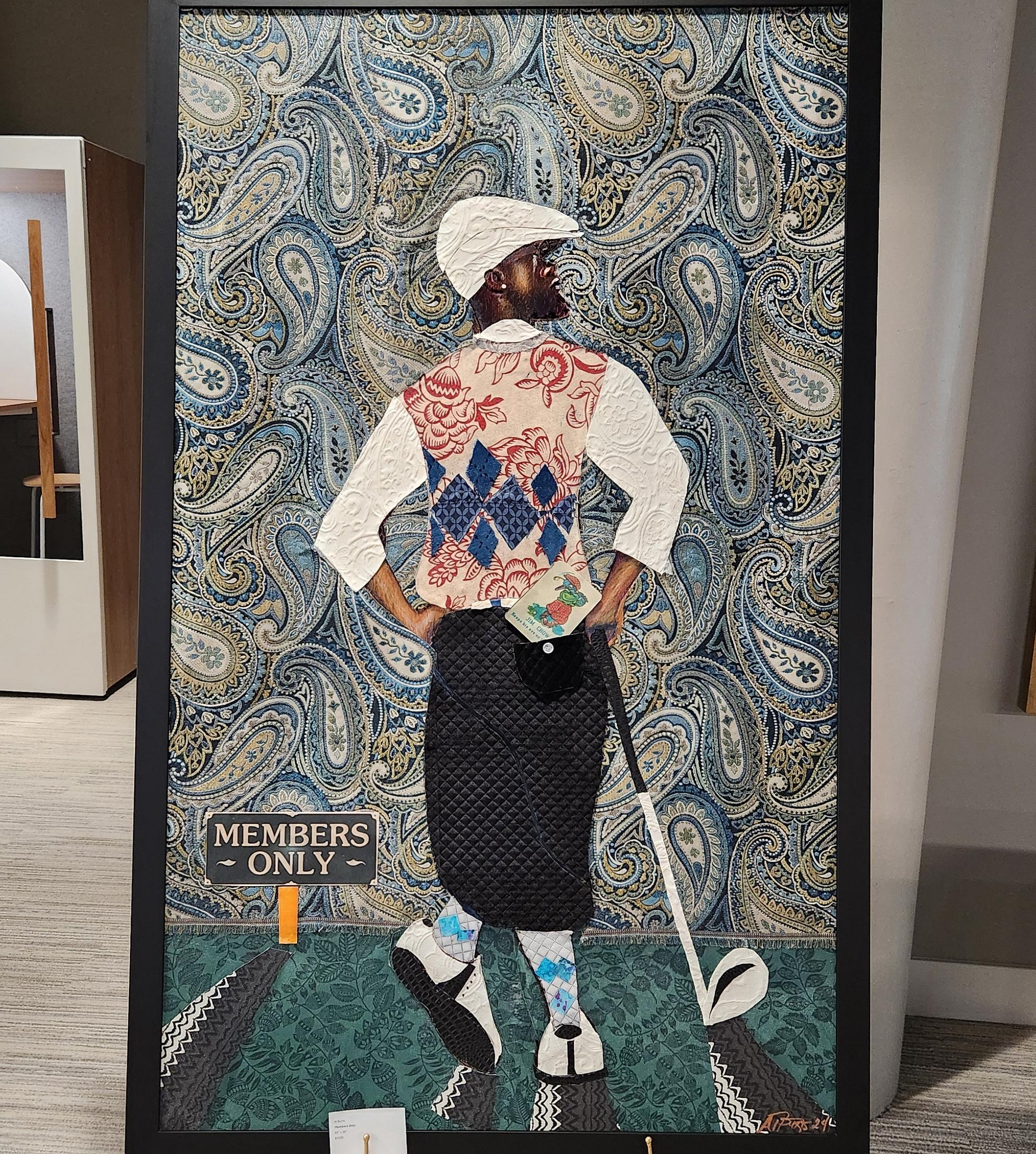
Al Burts’ “Members Only” and “Rose” and “Adamah” differ wildly in every way except for the unnerved but awed feelings they impart. His works vary greatly in media and method, but all display a profound mastery of his crafts. “Members Only” is all layers and texture; the figure’s back to the viewer, defiant and proud in stature and profile. The mixed media (jacquard fabrics, quilting, embossed paper? wallpaper?) provide intricate detail to the simply cut lines of the figure and backdrop. The lettering, a “Members Only” sign by his ankles in the bottom left, and a small booklet tucked into the golfer’s back pocket reading “Jim Crow Keeps his eye on [illegible],” speak more loudly than the intense patterns collaged around them.
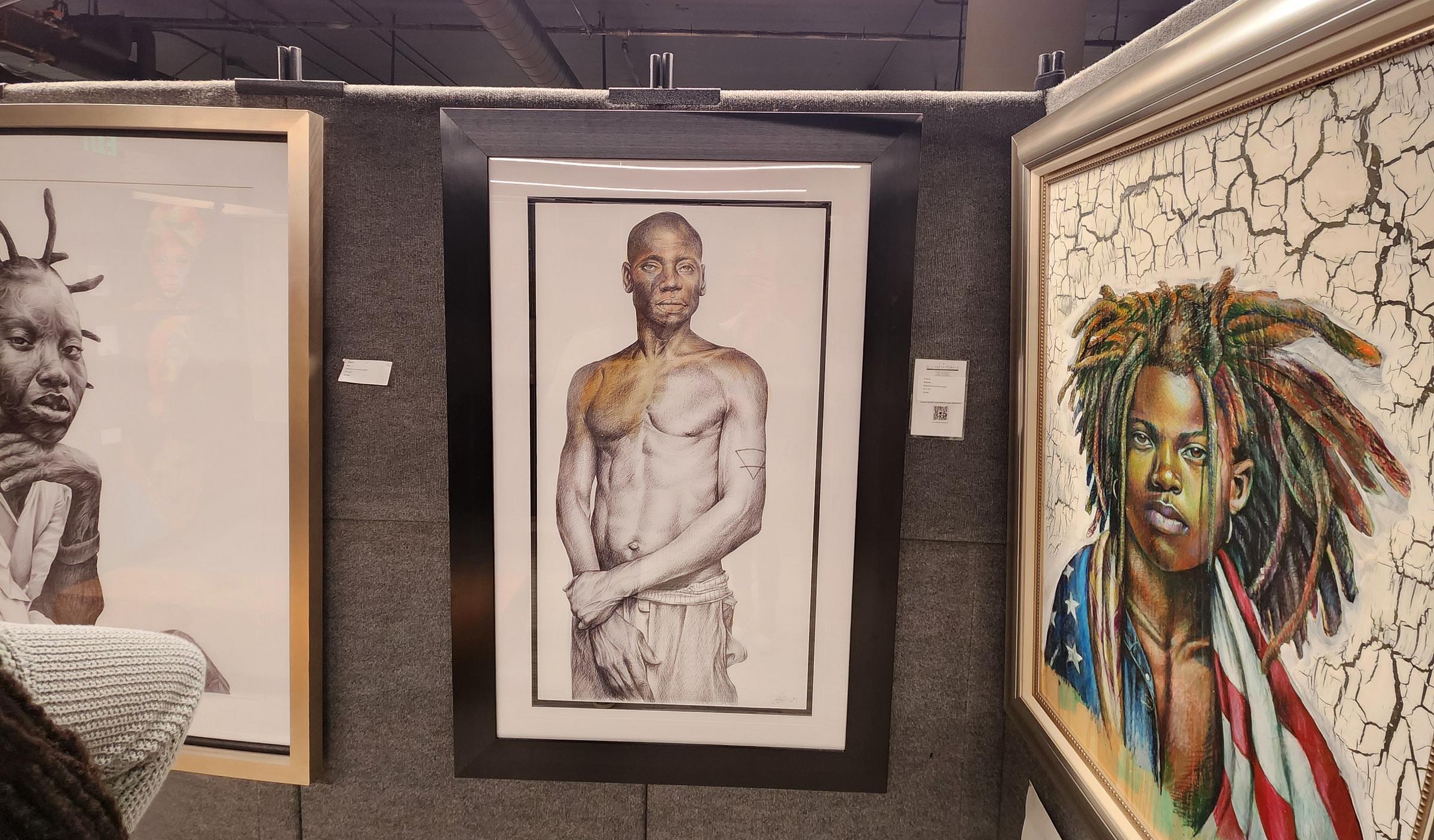
Rose and Adamah pose in stark but sweetly delivered ballpoint pen on paper, bared (in Adamah’s case physically, shirtless with abs rendered in deep pockets, fine line tattoo on his arm, pants waistband and pocket akimbo,) and powerful, their eyes, pursed lips, sad and strong. Rose’s skin is imprinted with leaf patterns, her locs styled straight up and out; her three-quarters stare slightly squinted, skeptical. She does not take your shit, and she is beautiful.

Afi Ese‘s “Sir Chesare,” painted in oils, silver gilding, and plaster on Masonite, is a luminous portrait, the rich hues of the subject’s maroon garb and skin, hair, lips, a testament to the importance of representation. The accompanying artist statement reads: “Moorish people from across North Africa have been depicted in European art since Medieval times, often as servants, hidden within dark areas of the painting, or with exaggerated features meant to look unflattering. Black people are worthy of being the focus.” His gold pocket watch and armored shoulders strong and regal, his expression soft, head crowned with a small bird and surrounded by roses, soft pink-and-white blooms, and a glorious ruffle of sheer fabric.

The roving gallerists were themselves featured (in Andre’s case, fairly heavily) in the show, and to good end. Each had a variety of textural elements in their works, with Frances “Marlene Campbell” Guichard’s “You Brought Me Flowers” an ultra-fun mixture of spray-painted, splotchy, rotund backdrop and fresh, chunky near-neon flowers atop. The flowers begged to be touched, with paint-dollop centers and petals outlined by negative space, scraped into reality.
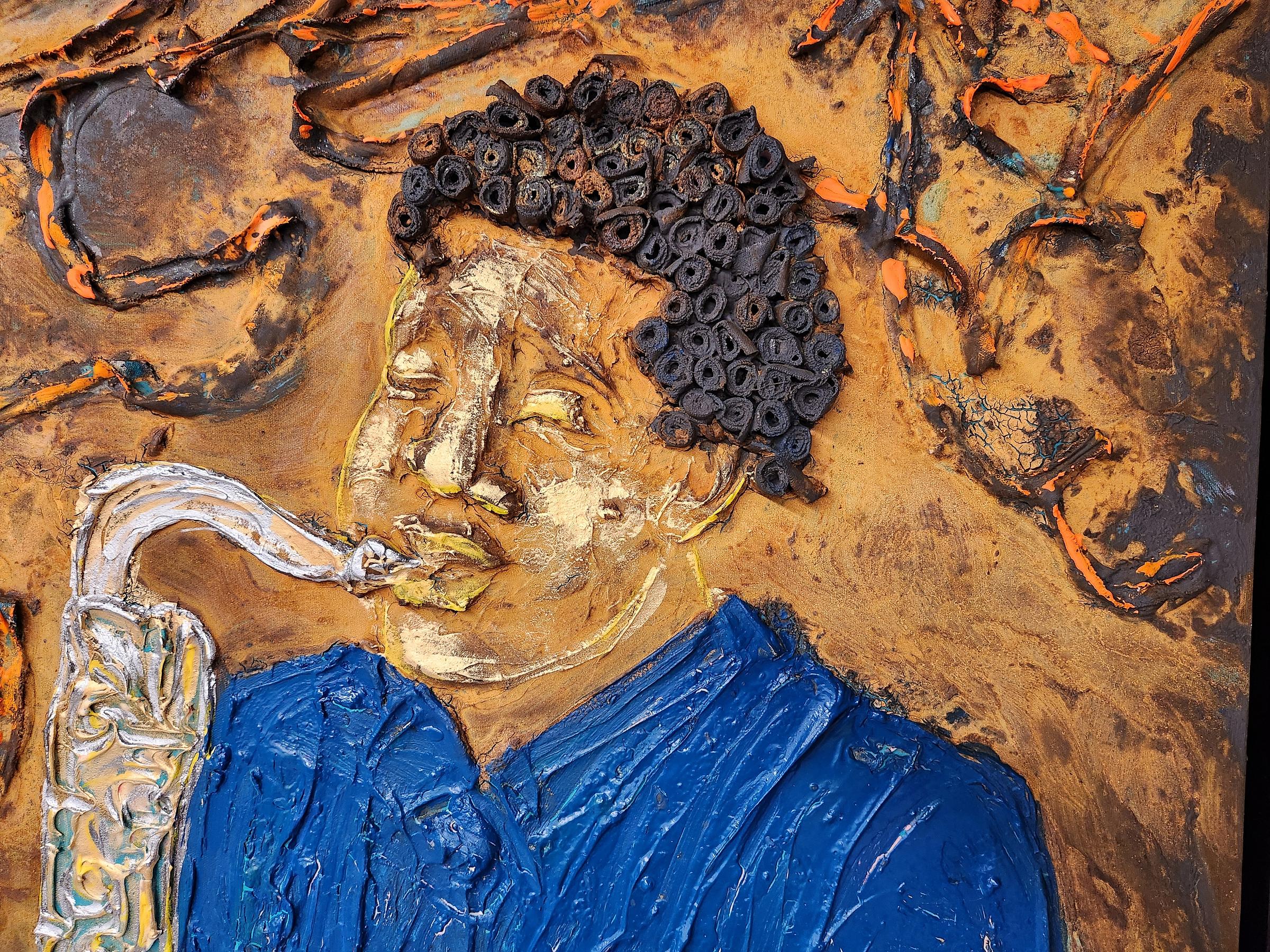
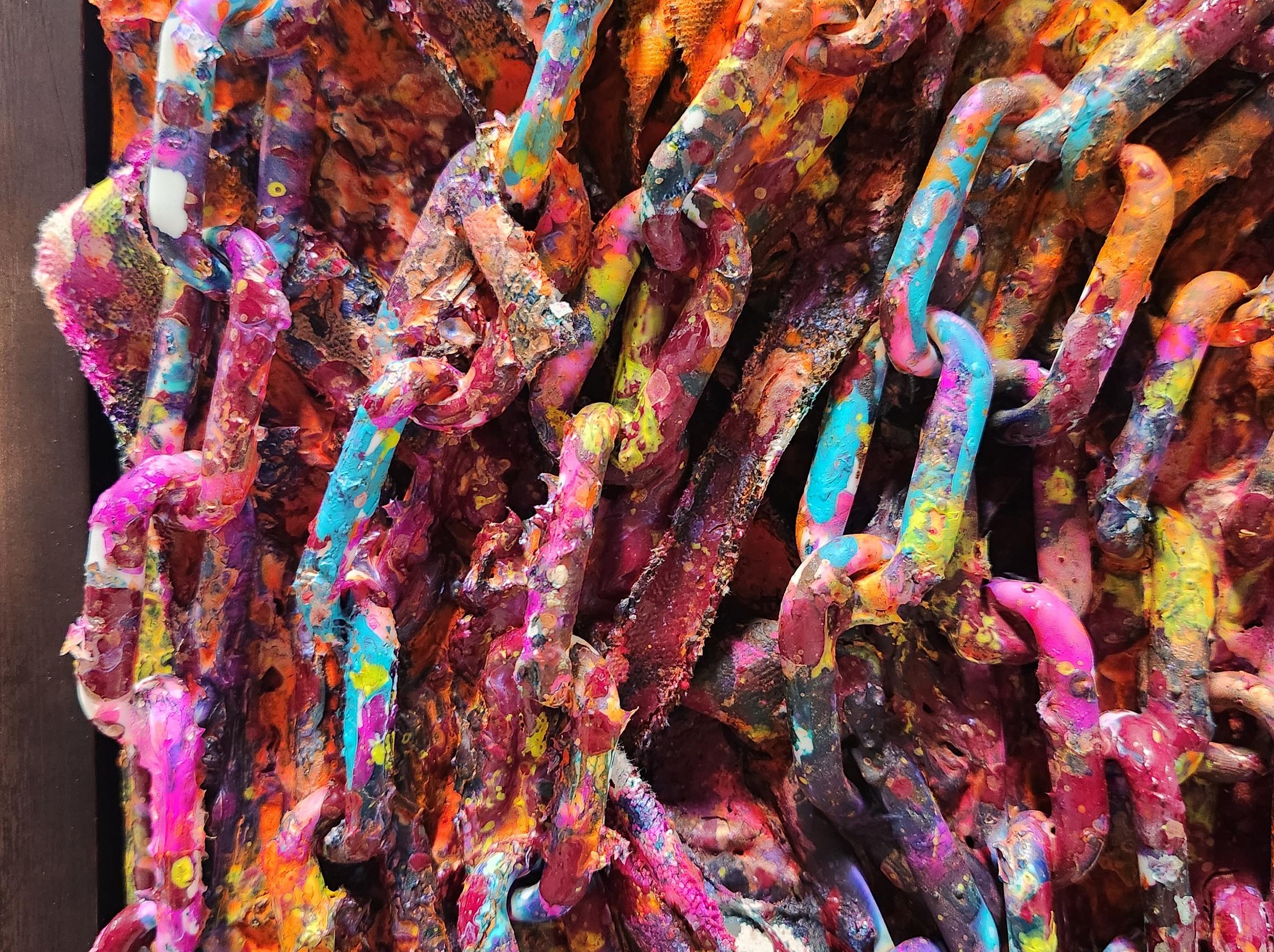
Andre’s works included rolled canvas hair, such as in “Improvisation (sax) IV,” and thickly coated chain links coiled into concentric circles in “Creation” and metallic instruments in others like “Improvisation (Trio) III,” or alternative hair patterns (“Sisters II). Part folk art and all feeling, these people hold each other, themselves, and their instruments, with love.
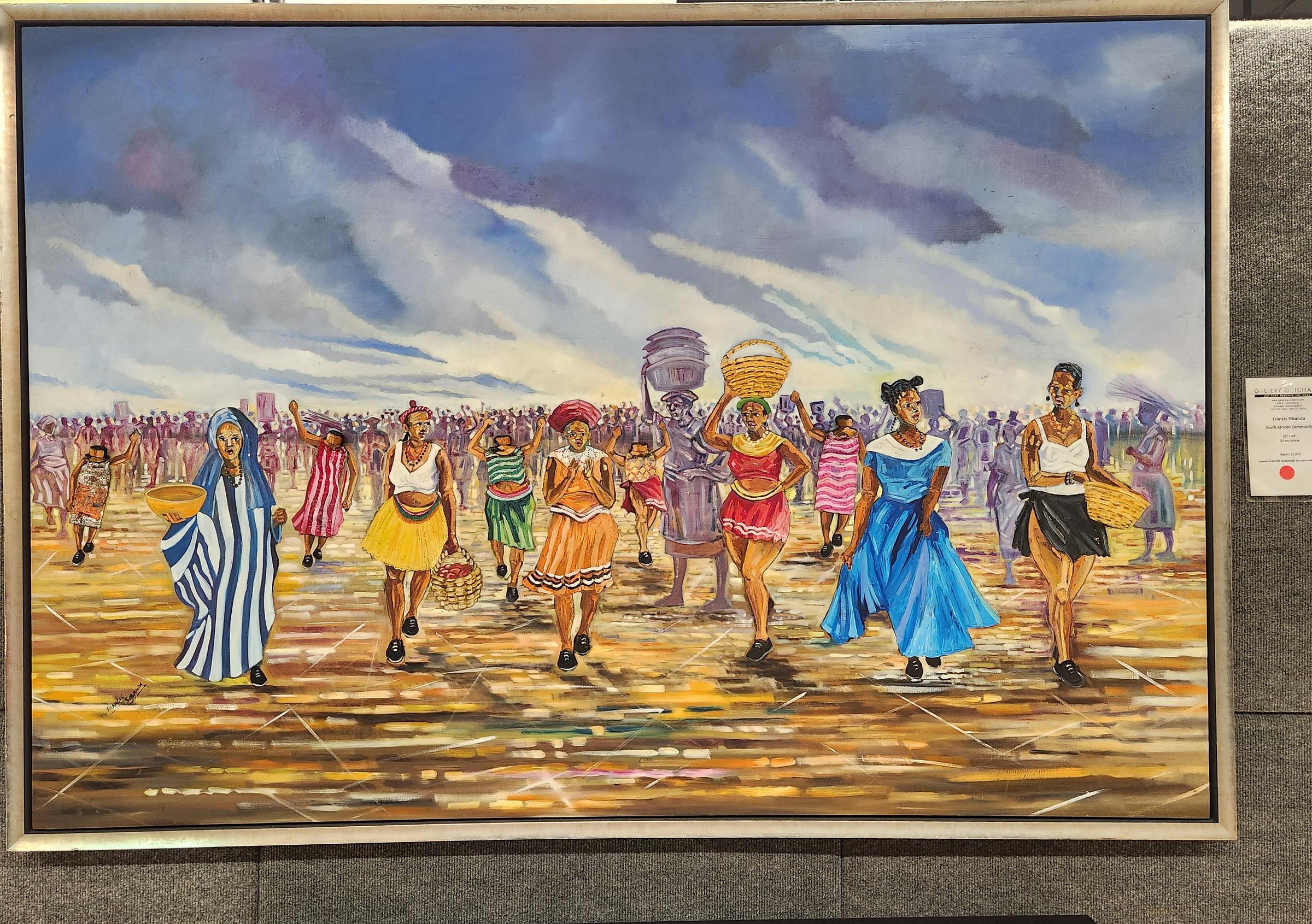
The final piece I lingered on was Francis Sibanda’s “South African Community,” a joyous scene of a large crowd of obscured figures led by a dozen in-focus and colorful women, the ground ahead of them sparkling in oil paint. Arms are raised, wardrobes are colorful and striped, baskets are carried. Five of them are paint tubes. Even headless, their bodies emanate intention, their dancing limbs caught in motion. The tube bodies are a wonderful Easter egg, barely altered but somehow profoundly human, a delight to peer closely at.
The pop-up was an overall delectable (though I did not sample the table full of bites) treat for a Saturday afternoon, imperfect in its ephemeral state, lovingly curated and filled to the brim with truly original works. Contemporary art that features portraiture and musical or political themes can easily feel trite or repetitive, uninspired facsimiles of celebrities or overt and uninteresting text. These living artists are bringing fresh feeling to their canvases and to walls near you. And if anyone’s looking to buy me a painting, you know where to start.
